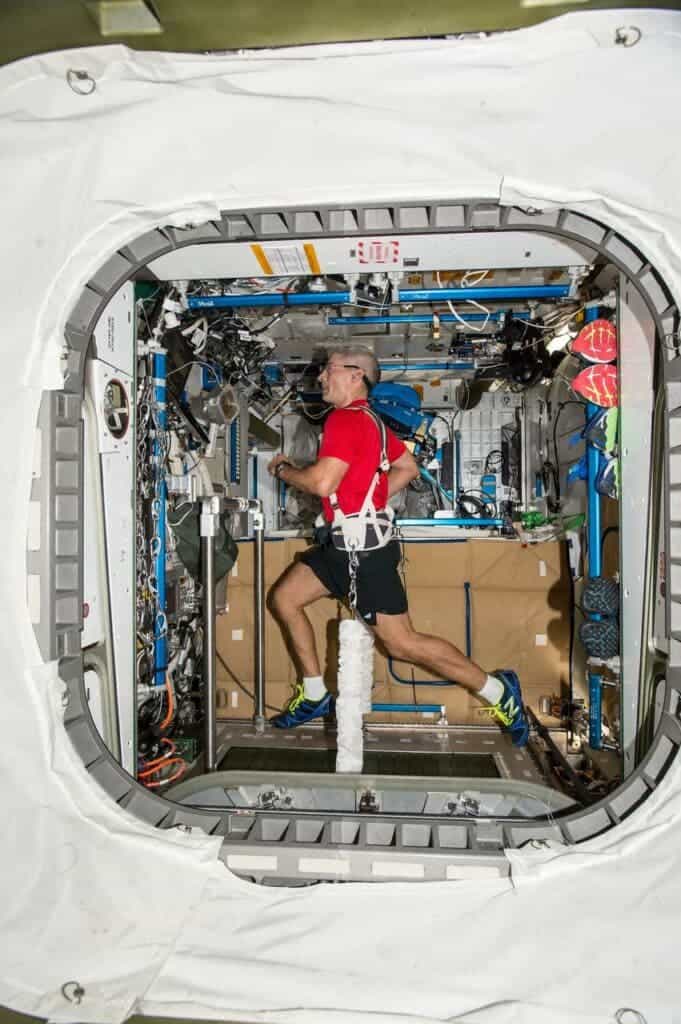
We already know that space does some weird things to the human body. The eyes, bones, DNA, and muscles all get distorted in one way or another due to the lack of gravity in orbit. Now a group of scientists from Doshisha University in Japan is taking the research of muscular changes a step further as they investigate strategies to keep astronauts from suffering neuromuscular problems.
The human body as we know it today was shaped by the continual pull of the Earth’s gravity. But since bones and muscles don’t have to work as hard to sustain the body’s weight due to the low gravity of space, this could cause them to weaken or waste away over extended stays in space.
Human neck and leg muscles are especially affected by prolonged exposure to a microgravity environment in a variety of ways, including atrophy, changes in fiber phenotypic traits, gene and protein expression, and contractile qualities. This is particularly true for muscles that defy gravity, such as the soleus (the calf muscle that runs from just below the knee to the heel) and adductor longus (one of the adductor muscles of the hip.
The effects of a decrease in gravity, or”unloading,” on neuromuscular properties have recently become the subject of investigation. The researchers in Japan looked at how the neuromuscular system’s morphology, functionality and metabolism change in the presence of less antigravitational activity.
The team then examined how motor neuron activity in microgravity affected the development of neuromuscular characteristics in simulation models of humans and animals. According to their research, afferent neural activity, which is the information transfer from working skeletal muscle to the central nervous system, is an important factor in controlling both the characteristics of the muscle and the activity of the brain.
Sarcomeres, the structural component of muscles, undergo modification as a result of the reduction of antigravitational muscular activities, the researchers found. This reduction of sarcomeres causes a decline in force development and, ultimately, muscle atrophy. Electromyograms of muscles like the soleus and the adductor longus that contract against gravity exhibit a drop in amplitude. This demonstrates how being in a low-gravity environment affects both the muscles and the nerves.
What astronauts can do to preserve their muscles and nerves
Gravity unloading has a negative impact on motor control by altering the mechanics and reducing the synchronization between antagonist muscles. To lessen the neuromuscular effects of reduced gravity and to maintain physical fitness, those aboard the ISS need equipment like treadmills, ergometers, and resistance training machines. Astronauts who worked out frequently aboard the International Space Station (ISS) nevertheless had trouble walking when they returned from missions. Exercise-based therapy may not always be effective in preventing neuromuscular alterations.
Every time astronauts are subjected to a microgravity condition for a period of six months or longer on the ISS (and certainly longer for a trip to Mars), new difficulties can arise. Major changes need to be made as a result of this evaluation, particularly in the area of astronaut health.
It would seem that adequately exercising the soleus muscle can reduce the likelihood of that muscular atrophy. Therefore, whether walking or jogging, the researchers found that astronauts should maintain a slow pace and land on their backs when exercising in microgravity. Additionally, passively stretching the soleus muscle on a regular basis appears to be advantageous. In order to develop adequate countermeasures to address neuromuscular issues that may arise during future long-term human space exploration missions, knowledge gathered from a unique viewpoint, such as that addressed in this work, may be crucial.
Finding a means to prevent bone atrophy will help more people than just astronauts, though. The general populace on Earth could also benefit from similar exercise routines, especially those suffering from osteoporosis.
Astronauts who dwell in space endure sickness and immobility more quickly than those who age normally on Earth because bone tissue is lost quicker than it is made. Those with bone issues residing on the Pale Blue Dot will benefit from the improvement of these exercise regimens and the discovery of novel medications to treat bone loss in space.
The study appeared in a special edition of Neuroscience & Biobehavioral Reviews, which was published to commemorate the first lunar landing.






